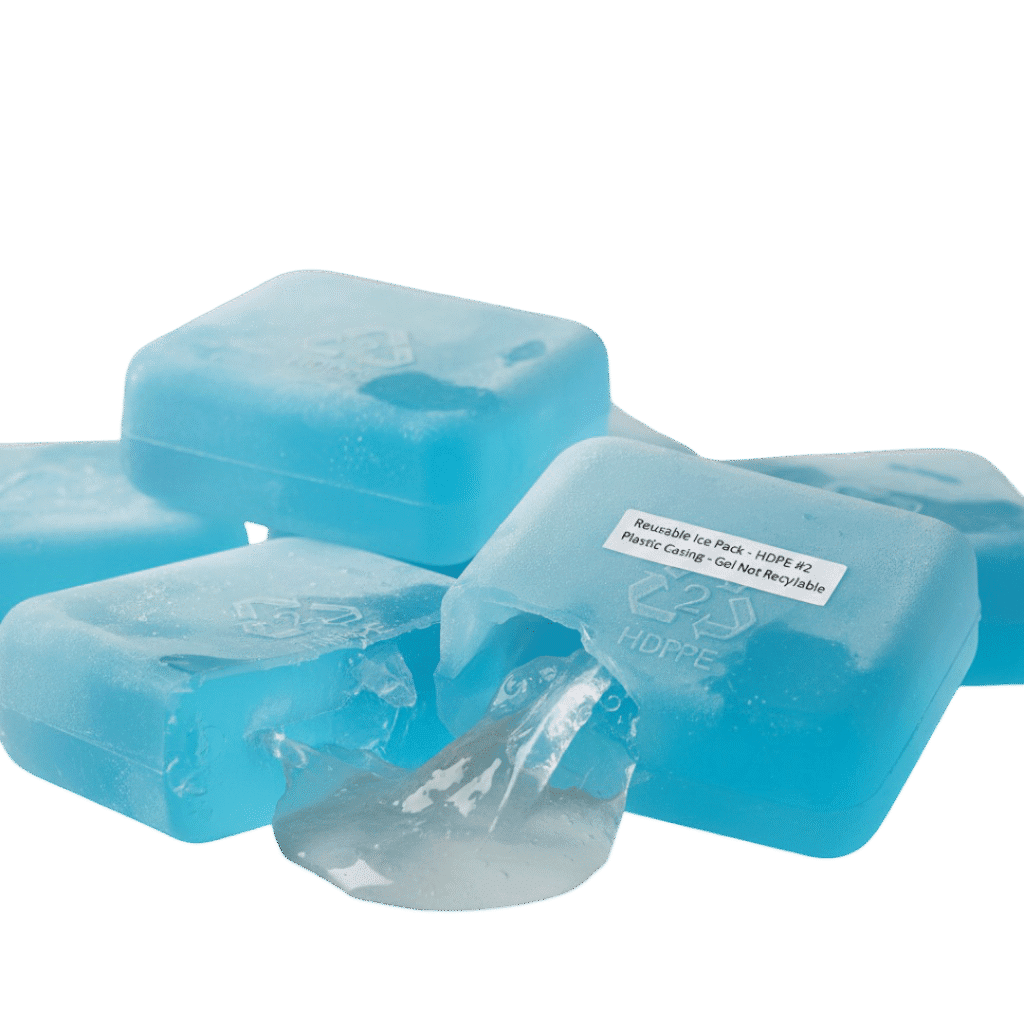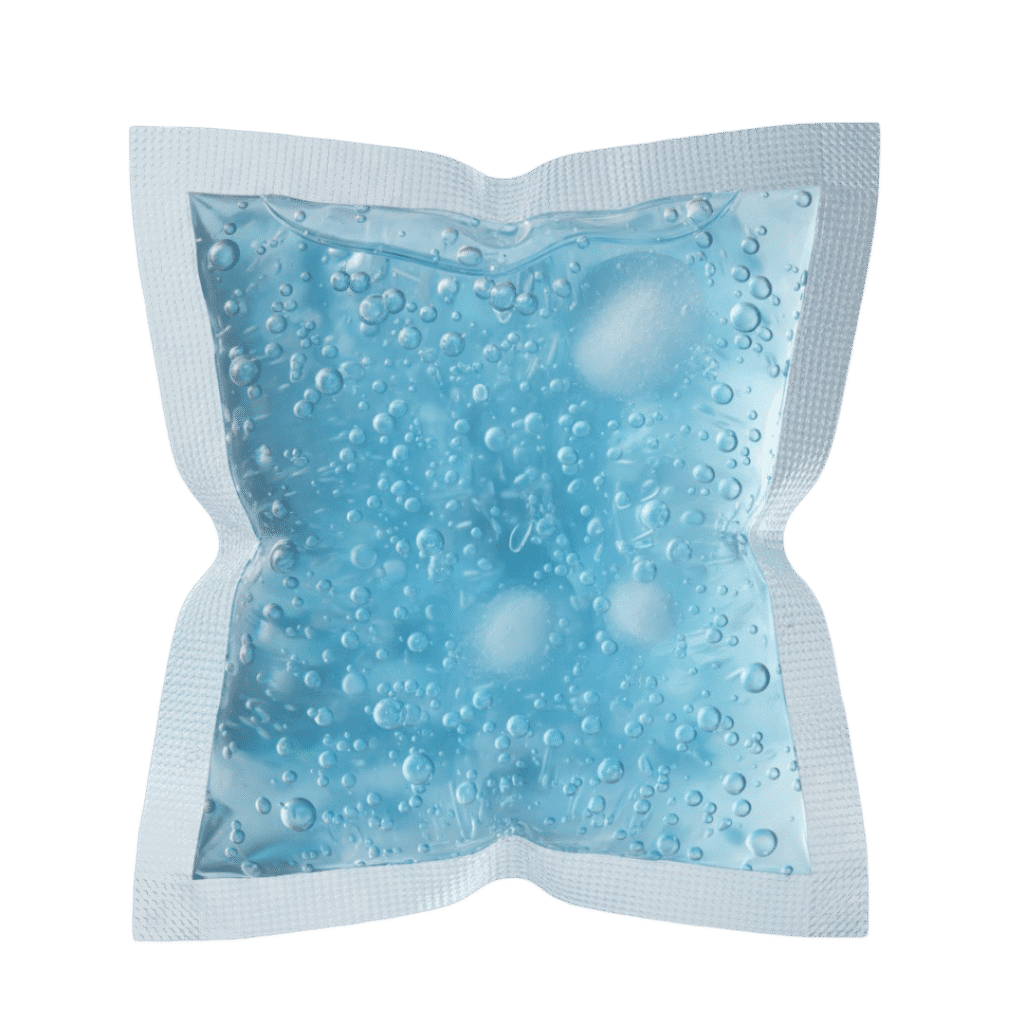Reusable ice packs are a staple in homes, medical kits, and shipping boxes, keeping food, medicine, and drinks cold for hours. But as sustainability becomes more important, many people are asking: Are reusable ice packs made from recyclable HDPE plastic?
Let’s explore what they’re made of, how HDPE contributes to their durability, and how to recycle them safely.

1. What Is HDPE Plastic?
HDPE stands for High-Density Polyethylene, a strong, lightweight, and highly recyclable plastic. It’s commonly used to make milk jugs, shampoo bottles, water containers, and yes — the outer shell of reusable ice packs.
Why HDPE is Used for Ice Packs:
- Durable and leak-resistant: It holds up well to freezing temperatures and repeated use.
- Non-toxic and food-safe: Perfect for cold storage near food.
- Recyclable: HDPE can be recycled into new bottles, pipes, or even new ice pack casings.

2. What’s Inside Reusable Ice Packs?
While the outer shell is usually HDPE, the inside contains a gel or liquid designed to stay cold longer than water.
Common fillers include:
• Gel polymers (e.g., sodium polyacrylate or hydroxyethyl cellulose)
• Silica gel or cellulose gel
• Water with antifreeze agents
⚠️ Important: The inner gel is not recyclable and must be disposed of properly — only the HDPE shell can be recycled once it’s empty and clean

3. Are Reusable Ice Packs Recyclable?
Yes, but only partially.
You can recycle the HDPE plastic casing after separating and safely discarding the inner gel.
Here’s how to do it correctly:
- Cut open the pack carefully.
- Empty the gel into a sealed bag and throw it in household waste (never down the drain).
- Rinse and dry the plastic shell.
- Check the recycling code: Most HDPE packs have a #2 recycling symbol.
- Place in your recycling bin with other HDPE plastics.
If your local recycling center doesn’t accept ice pack plastics, consider special recycling programs for HDPE materials.
4. Eco-Friendly Alternatives
If you’re looking to reduce waste, consider:
- Reusable HDPE ice packs that last for years with proper care.
- DIY ice packs using biodegradable materials like cornstarch gel in reusable silicone bags.
- Recycling-based brands that use post-consumer HDPE to make new ice packs.
Some companies now produce eco-gel packs with biodegradable gel fillings and recyclable HDPE covers — a perfect mix of convenience and sustainability
5. How to Extend the Life of Your Ice Packs
To minimize waste and get the most from your HDPE ice packs:
- Avoid puncturing or dropping them on hard surfaces.
- Clean regularly with mild soap and water.
- Store flat in the freezer to prevent cracking.
- Reuse for shipping, picnics, injuries, or grocery trips.
The longer you use your ice packs, the smaller your environmental footprint.
6. Why HDPE Is the Best Choice for Ice Packs
Compared to other plastics, HDPE stands out because it is:
- Freezer-safe
- Non-toxic
- Recyclable
- Highly resistant to cracks and leaks
It provides the strength needed to handle freezing, thawing, and reuse — all while staying environmentally responsible.